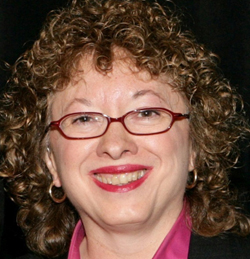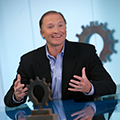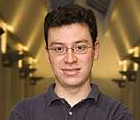When Rolf Schlake talks about supercritical fluids, his excitement is apparent even after years of working with these substances. And indeed, in some ways a supercritical fluid seems like a magic potion.
A state of matter poised halfway between liquid and gas, with properties of both, a supercritical fluid can dissolve and permeate substances. Carbon dioxide, in its supercritical-fluid state—easily reached at 31 degrees Celsius and 1,150 pounds per square inch—can extract caffeine from coffee and cinnamon oil from plants. It can clean the porous metals used in hip replacements. It can dry aerogels used as insulation in spacecraft. It can dye fabrics without water. There are hundreds of applications that are useful in many industries, and more to be explored.
Applied Separations is in the center of research and manufacturing of systems to put supercritical fluids to use. Schlake even had the chance to explain how such technology benefits the environment to President Barack Obama when he visited Allentown in 2009.
And the company is committed to staying in Allentown’s urban center.
Schlake, a native of upstate New York, has degrees in geology and environmental engineering from Rensselaer Polytechnic Institute, as well as an MBA and a background in chemistry.
What inspired you to start Applied Separations?
I was the vice president of marketing for a performance chemical company called J.T. Baker, in Phillipsburg, N.J., for about 12 years. I controlled the R & D budget as well. I was going to do this (making sample preparation products and supercritical fluid technologies) inside that company with a couple of other people, with the blessing of the administration. But the parent company was involved in a takeover struggle and they cut off all funding.
So we stepped out and started it on our own in 1987. The company is active in two areas: Sample preparation products . . . morphed into the packaging of DNA forensic kits. This involved clean rooms for getting rid of contaminants.
The other, faster-growing area, which has implications for the environment and nanotechnology, is supercritical fluids using carbon dioxide. It’s such a wide-open field and we’re finding more and more applications for it.
What are some of the applications?
We use it for a wide variety of extractions. It’s powerful for doing spices, coffee, organic foods. In addition, we’re not creating any carbon dioxide; we use existing CO2 as a solvent temporarily to extract a product, and then recycle it many times.
It’s very good for extracting oils and greases, so this becomes beneficial for cleaning medical devices, such as a hip replacement, more efficiently (six hours instead of a week) and you’re not using a lot of water and solvents.
We have worked with NASA on the drying of aerogels. We have work going on in textile dying; supercritical CO2 can dissolve the dye, and then pass it through the cloth. The textile industry currently uses huge amounts of water; this technology is completely dry and eliminates any kind of pollution. In India, 50 textile companies have had to shut down because of a water shortage. They’re very interested in this technology.
Other applications are cleaning artifacts in archeological excavations, the extraction of Omega 3 fatty acids from algae, cleaning bilge water in submarines. Supercritical water is also being looked at for understanding volcanic areas at the bottom of the ocean, and for getting rid of sarin gas.
How has the company grown?
We now have 50 employees; sometimes we bring in as many as 20 temps. We have a 35,000-square-foot, five-story building of which we occupy four floors (we rent out the first floor). Here we have the clean rooms and we do the smaller instrument assembly. Our technicians and engineers are here; we have research labs where we do contract research and our own research.
We also have a building a block away where we build our large, production-size systems. Our clients range from research universities and pharmaceutical companies to material science, medical device manufacturers and government. Fifty percent of our clients are international. We build systems that can be as simple as the faucets in your bathroom to a complete turnkey operation.
What resources did you take advantage of in starting your company?
We started as a (Northeastern Pennsylvania) Ben Franklin Technology Partners company, on the campus of Lehigh University, which was very helpful. After two years, we became an anchor tenant in the Allentown Economic Development incubator.
Ben Franklin has been key in getting started, with grants for research. We have also taken advantage of programs from the Manufacturers Resource Center, and we built our clean rooms with loans from the Lehigh Valley Economic Development Corporation.
It’s been a good partnership all along. In return, we have made a commitment to downtown Allentown and remain in the urban core.
What has been the biggest challenge in getting Applied Separations off the ground?
Awareness. Trying to get to a company that’s going to buy your stuff, and having them get the fact that you know what you’re talking about. Nobody wants to be the first to buy your stuff, because you might not be around next year.
Ben Franklin helped us develop a level of credibility by being part of (their program).
The biggest challenge with supercritical fluids is that people aren’t familiar with the technology. It’s a real education process. I give lectures and workshops all over the world.
What’s next for your company?
There are some industries for which we’re looking seriously at making dedicated equipment, like the textile industry. Most of what we build now can do various applications. For textile dying, it would be equipment that works in a narrow focus.
We’re also looking at making instruments that would do flash chromatography for the pharmaceutical industry (without using solvents).
— by Susan Pena


http://www.appliedseparations.com/
930 Hamilton St., No. 4 Allentown, PA 18101
↑ Top


